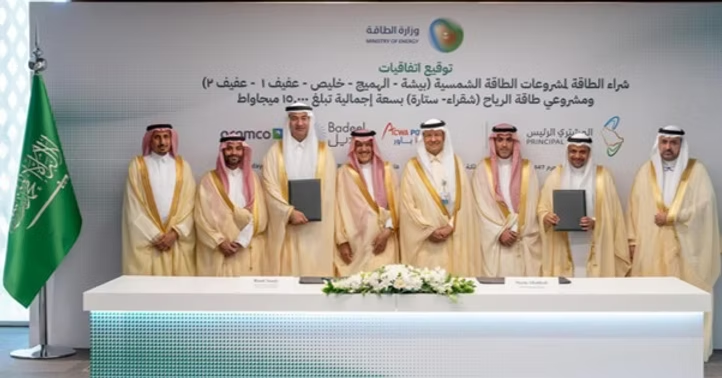In mid-July 2025, Saudi Arabia announced its largest-ever renewable energy investment, with ACWA Power leading an $8.3 billion initiative to develop seven large- scale clean energy projects across the Kingdom. In partnership with SAPCO (a subsidiary of Aramco) and Badeel (a Public Investment Fund company), the consortium will build five solar photovoltaic plants with a combined capacity of 12 gigawatts and two wind farms totaling 3 gigawatts. These projects are spread across several key provinces, including Riyadh, Makkah, Madinah, and Asir, and are expected to reach financial closure by the third quarter of 2025. Commercial operations are scheduled to begin between 2027 and 2028.
This bold initiative is central to Saudi Arabia’s Vision 2030 strategy, which aims to shift the nation’s energy matrix toward renewables and reduce dependence on fossil fuels. By 2030, the country targets 50% of its electricity to come from renewable sources, with a long-term ambition of achieving net-zero emissions by 2060. The new investments will increase ACWA Power’s domestic renewable portfolio to 34 gigawatts and significantly boost its global footprint. The involvement of major state-owned entities such as Aramco and the Public Investment Fund signals a coordinated national push to reposition Saudi Arabia as a leader in clean energy investment and innovation.
However, the rollout of these projects also brings into focus the importance of maintaining a strong social license to operate (SLO). Given the scale of construction and the ecological sensitivity of several project sites, the consortium must ensure meaningful engagement with local communities, uphold environmental protections, and provide tangible socioeconomic benefits such as job creation and skills development. Transparent communication and inclusive governance will be essential to building public trust, minimizing resistance, and ensuring the long-term success of this transition. In a country historically defined by oil wealth, these renewable projects represent not just infrastructure, but a test of social and environmental accountability in the new energy era.

